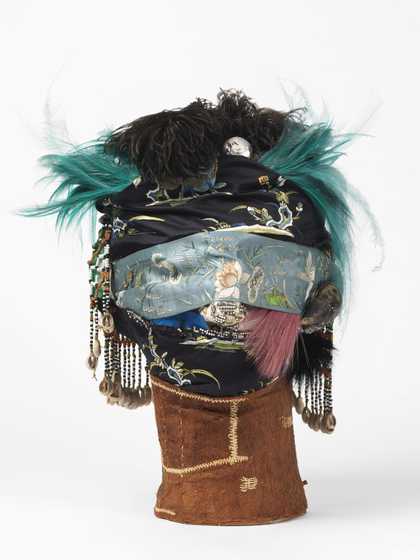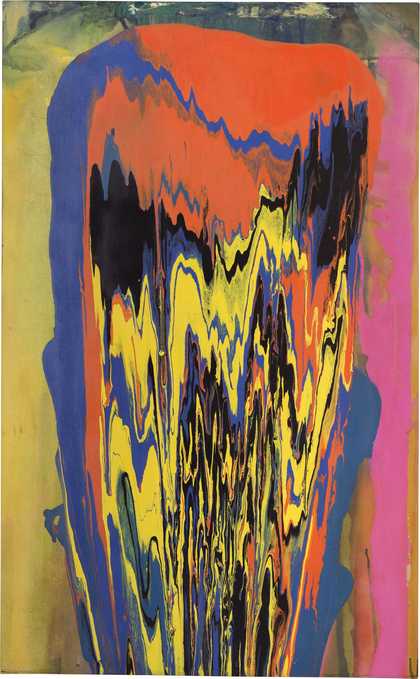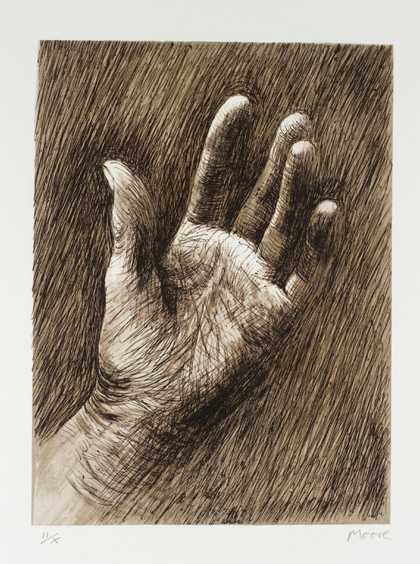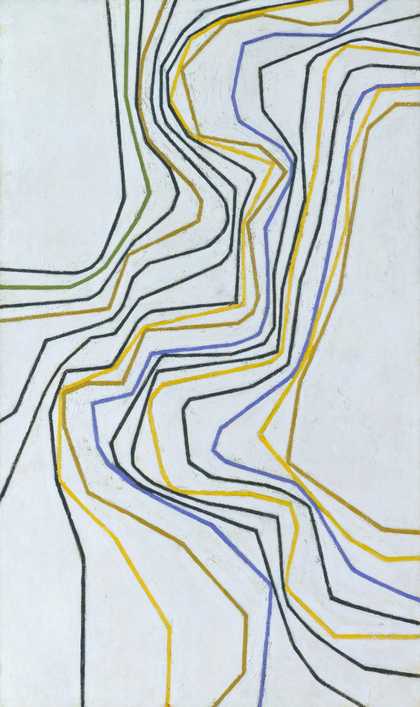
Kenneth Martin
Seventeen Lines (1959–63)
Tate
Drawing a line is the way we all learn to draw. When we make our very first marks as children, the pleasure is in the lines and scribbles we produce. These simple lines can become much more though. Our brains are so trained to look for patterns, we can see movement and shape all from a few simple marks on a page.
Mark Making
You can use lines in lots of different ways to create shapes, to build up areas of shadow or tone - to trace form or even to suggest movement.
How you make your lines changes how we ‘read’ them. Varying the weight of your line (how heavily you press with your pen or pencil) can give a sense of depth or movement, making some lines come towards you and others recede.
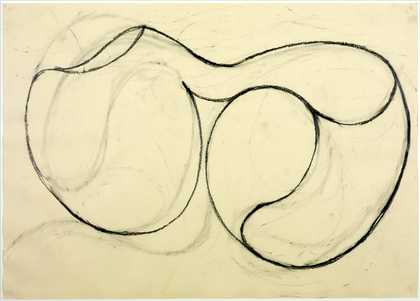
Richard Deacon
Untitled Drawing (1980)
Tate
Some drawing materials don't really give you a varied line. Using something like a fineliner you can instead use the placement of the lines you draw to give a feeling of space or texture.
Where Eva Hesse’s graphic lines are placed close together they make us see shape and form. Maybe there is a shadow behind that flapping curtain, or perhaps it’s a fringe on a blanket. Some of the pipe shapes seem to be squashy, while others, with fewer lines, look hard or rigid.
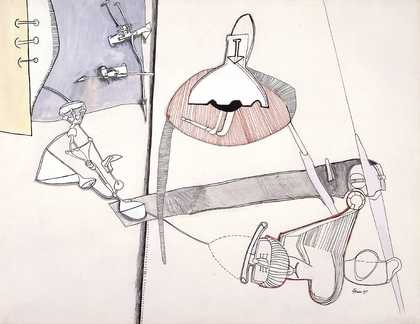
Eva Hesse
Untitled (1965)
Tate
Henry Moore uses repeating lines criss-crossing each other to bring out the form of a skull bone. The more lines he uses the more we see the depth of shadows. The less-lined areas pop out as highlights. Notice how his marks don’t always follow the contours of the bone, but all the marks together bring the form to life.
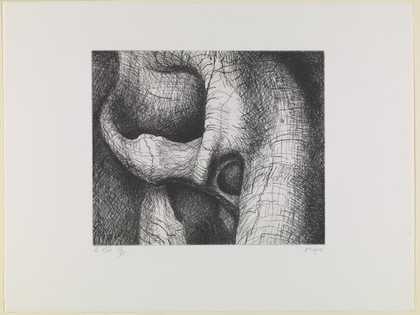
Henry Moore OM, CH
Elephant Skull Plate XXV (1970)
Tate
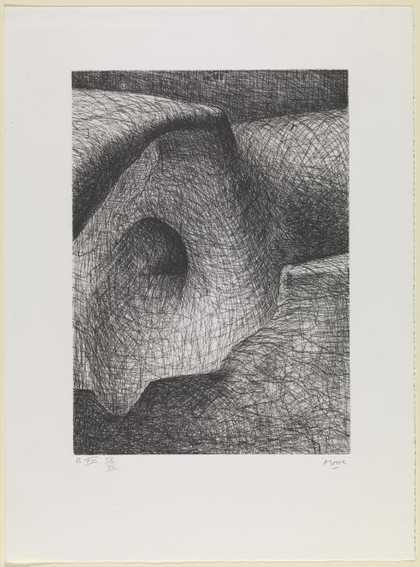
Henry Moore OM, CH
Elephant Skull Plate XVI (1970)
Tate
Mark making isn’t always representational though. Sometimes it's more about the process of making the mark itself.
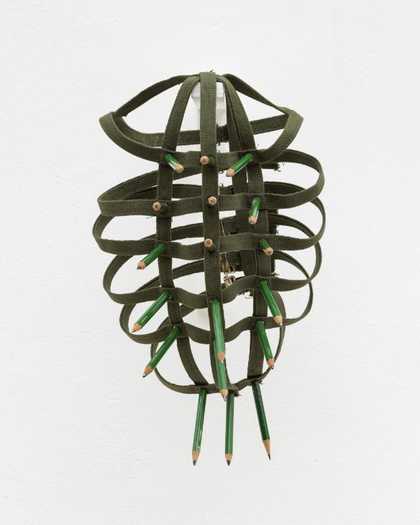
Rebecca Horn
Pencil Mask (1972)
Tate
Imaginative Lines
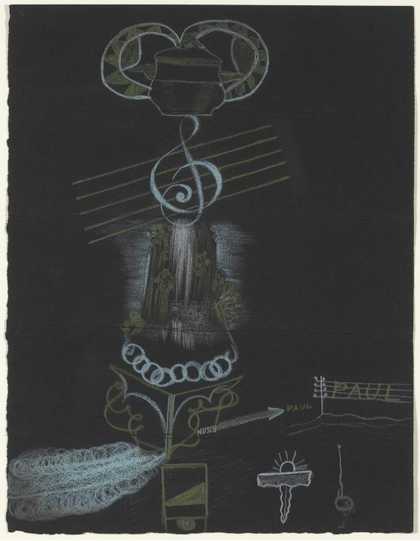
André Breton, Nusch Eluard, Valentine Hugo, Paul Eluard
Exquisite Corpse (c.1930)
Tate
© ADAGP, Paris and DACS 2026, London; © Estate of Paul Eluard
Have you ever played 'Heads, Bodies, Legs'? Where you draw one part of a person or animal on a piece of paper and then pass it on to someone else to draw the next part? This was a technique invented by the Surrealists to try to create a new sort of drawing. Surrealism was an artistic movement of the early 1920s, and these artists and writers didn't want to represent the visible world around them. Instead they wanted to tap into imaginative or unconscious dream worlds.
Surrealists came up with lots of techniques to try to unlock their unconscious minds – and bring out the hidden creativity within them. One was collaborating on these drawings they called ‘cadavres exquis’ (which means ‘exquisite corpse’ in French) – a lot like 'Heads, Bodies, Legs', except you could draw absolutely anything. (You could try playing this with other friends taking the same options as you – sending your drawings through the post).
But Andre Breton and other Surrealists also practiced what they called automatic writing or drawing. They tried to write or draw without thinking about what they were doing, and letting their hands just draw whatever came out of them! It’s really a type of doodling! They thought this would tap into their dream worlds and create new worlds in their art. Lots of artists since have also tried this sort of automatic drawing: just letting a line ‘go for a walk’ and seeing what comes out of it.
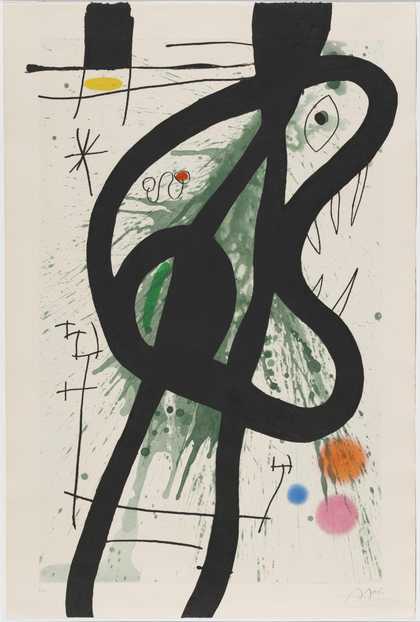
Joan Miró
The Great Carnivore (1969)
Tate
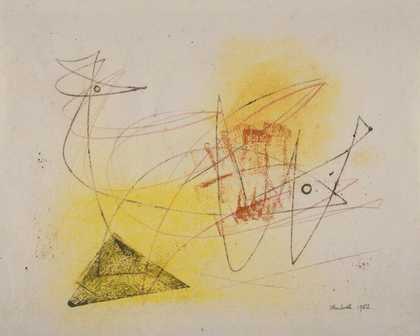
John Wells
Untitled Drawing (1952)
Tate
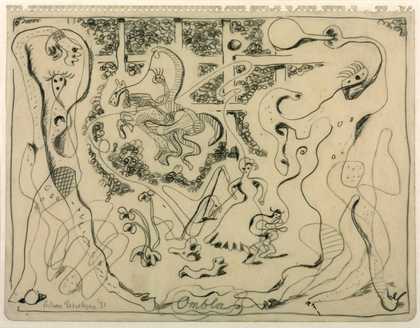
Julian Trevelyan
Ombla (1931–2)
Tate
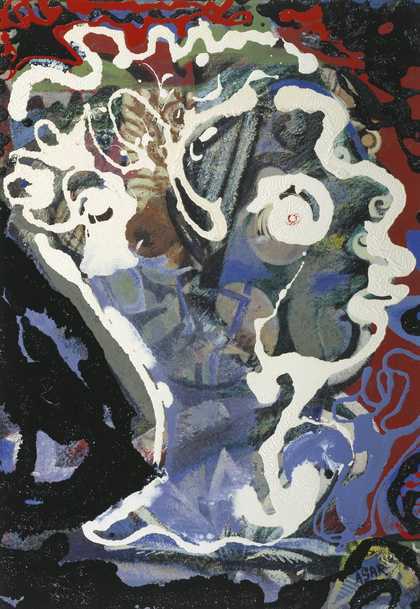
Eileen Agar
Head of Dylan Thomas (1960)
Tate
Try taking the thoughts out of your drawings, and letting your pen travel of its own accord. You might need to try this a few times before you get the hang of it. Some artists felt like they were tapping into a meditative or trance-like state. You could try tricking your brain into stopping thinking by:
- Drawing without taking your pen from the paper at all
- Using your non-dominant hand (the one you don’t normally use to draw)
- Drawing with your eyes closed
Once you’ve got some drawings, see if there are any recurring shapes or if they suggest any motifs or subjects to you.
Lines in space
Lines can also translate from the page to the 3D world of sculpture. Some sculptors use lines in their works, both while drawing studies to to work from and actually in their finished forms. A line can be visible, and made into three dimensions in wire or wood. Or it can be invisible, drawn through space by movement, or even created by the play of light or the spaces between sculptural forms.
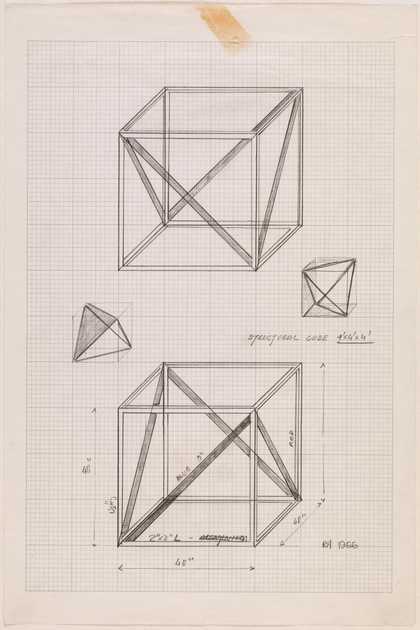
Rasheed Araeen
Drawing for Sculpture (1966)
Tate
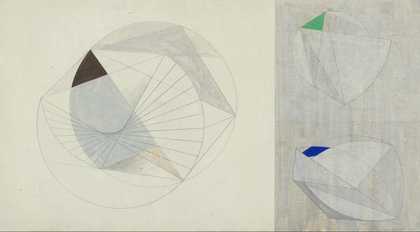
Dame Barbara Hepworth
Drawing for ‘Sculpture with Colour’ (Forms with Colour) (1941)
Tate
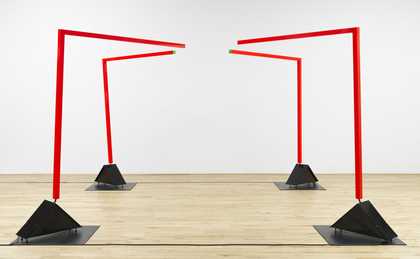
Peter Logan
Square Dance (1970)
Tate
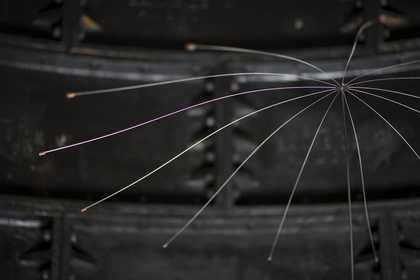
Wen-Ying Tsai
Umbrella (1971)
Tate
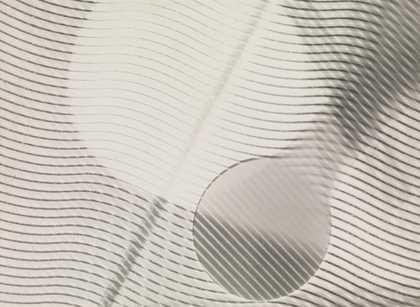
Luigi Veronesi
Construction (1938)
Tate
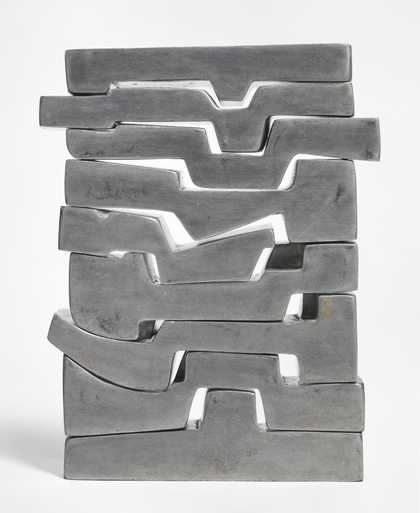
Saloua Raouda Choucair
Poem of Nine Verses (1966–8)
Tate
Fast and Fluid
Using simple lines can be a way of getting the feeling of a subject down on paper quickly. Henri Gaudier-Brzeska was a master of this sort of quick sketch. His fluid, fast lines create recognisable and characterful shapes and forms with the smallest number of marks.
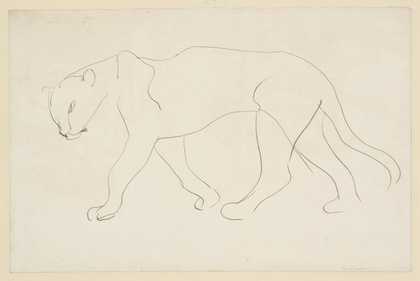
Henri Gaudier-Brzeska
Jaguar (c.1912–13)
Tate
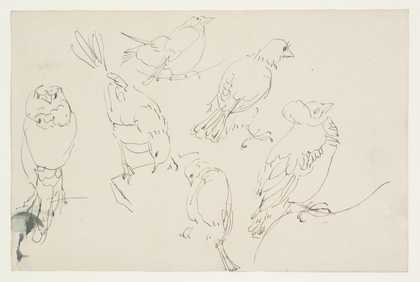
Henri Gaudier-Brzeska
Studies of Birds (c.1912–13)
Tate
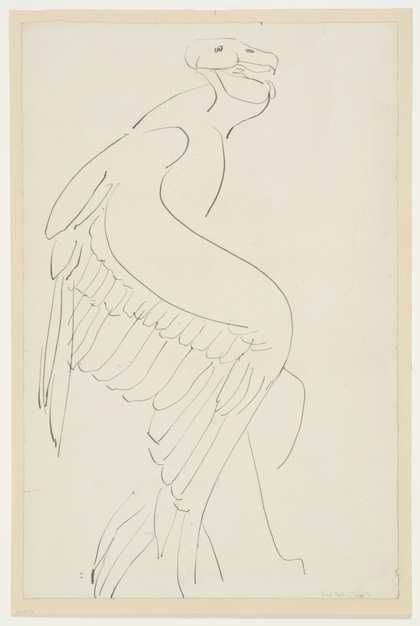
Henri Gaudier-Brzeska
Vulture II (c.1912–13)
Tate
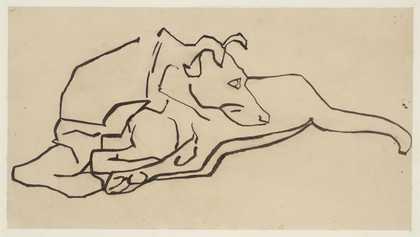
Henri Gaudier-Brzeska
A Dog (c.1913)
Tate
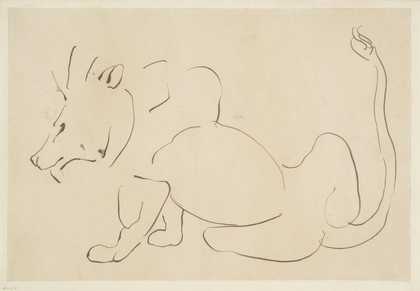
Henri Gaudier-Brzeska
Lion (c.1912–13)
Tate
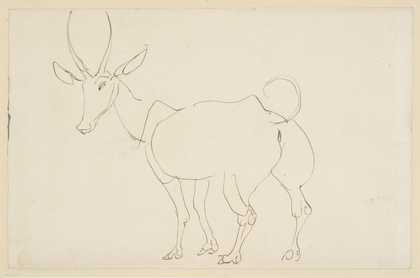
Henri Gaudier-Brzeska
Eland (c.1912–13)
Tate
He often sketched at London Zoo in Regent’s Park – quickly jotting down the animals as they paced and moved. He used pen and ink – perfect for quick flowing lines. It’s a good practice to get into, drawing as quickly as you can. It loosens up your muscles and forces you to look at the most essential lines you need to get your idea or form across.
Gaudier-Brzeska drew quickly from life - jotting down quick portraits to capture his subjects. Ask a friend or family member to sit for you – or you could draw a pet! Don’t be tempted to do this from a photo, as you won’t get the same results. You could even do this over a video call.
Try using an ink pen like Gaudier-Brzeska or a soft pencil or charcoal – anything that will give you a flowing line. Set a timer and give yourself 2 minutes to make your drawing (this means your sitter doesn't have to stay still for too long as well). Spend most of your time looking at the person you are drawing, and draw quickly, just glancing at your paper. See how few lines you really need to build up a picture. Once your time is up stop! Don’t be tempted to keep going, the idea is to get used to working fast. Take a look at what you’ve done, and have another go!
Do lots of these fast sketches, and you will start to get a feel for the shapes and lines and the proportions that build up your portrait. You could reduce your time to one minute or even 30 seconds.

